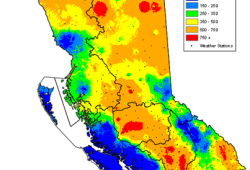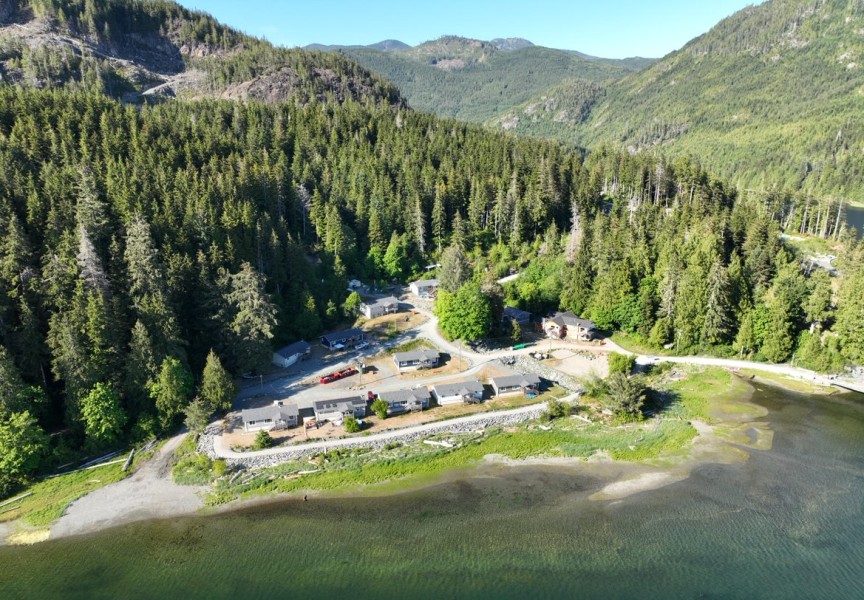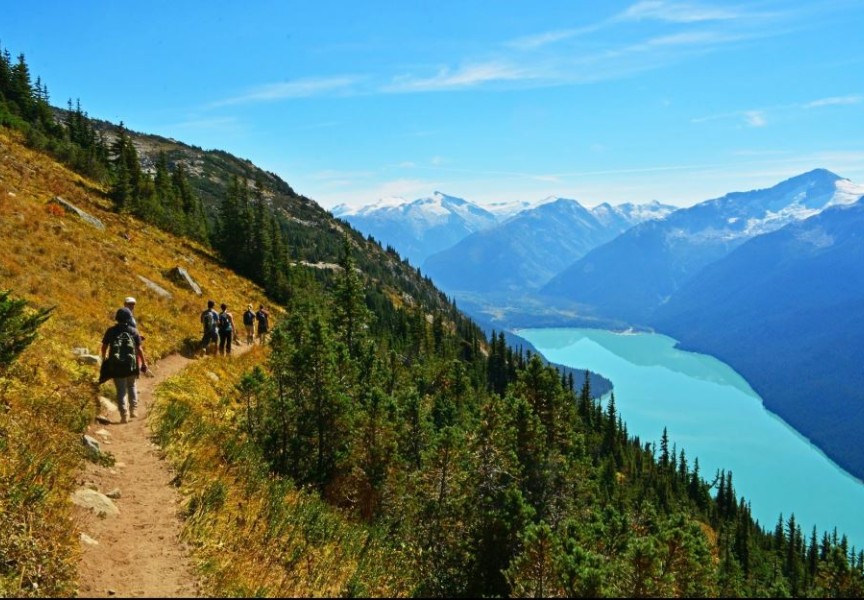The province is preparing, earlier than ever, for what could be a challenging wildfire season with above-average fall and winter temperatures predicted to continue, leading to persistent drought and a lack of snowpack accumulation.
“It is no secret that we did not accumulate the snowpack that we were hoping for in main parts of the province,” said Bowinn Ma, B.C.’s minister of Emergency Management and Climate Readiness. “While we all hope to get more rain in the months ahead, we are taking action now to prepare for what could be a very challenging season.”
With the current forecasts and persistent drought conditions, the province is preparing for what may be an active spring wildfire season, according to a press release.
“This activity is expected to increase if there continues to be limited precipitation over the next several weeks and months,” reads the release. “Until significant and sustained rains occur, the risk of ignition will remain elevated.”
As of March 1, the province’s average snowpack is 66 per cent of normal, tying for the second lowest level of March snowpack in the last fifty years, shared Jonathan Boyd, a hydrologist with the River Forecast Centre at a teleconference.
Vancouver Island snowpack levels are below the provincial average, which is at 46 per cent of normal.
“Before the impacts of a potential continuation of drought conditions are felt we have to get through the spring snowmelt related flood season,” said Boyd. “Mountain snowpack can continue to accumulate into April and potentially even May.”
This year an El Niño is in effect, which is a climate pattern characterized by warmer surface ocean temperatures at the equator, resulting in warmer weather along the West Coast. This is forecasted to extend into the spring, bringing a chance of early snowmelt, he said.
But, Boyd takes note of the last El Niño event in 2019. A lower-than-average snowpack, measured on April 1, 2019, melted rapidly in the extreme heat experienced in May. While the province prepared for extreme drought, July and August were cold and wet, he said.
“We were dealing more with flooding than we were with drought or wildfire,” said Boyd, who added that there isn’t a guarantee that last year’s severe drought will be repeated. “But it certainly is possible, and it could be worse if we get similar climatic conditions as last year with this very low snowpack.”
Neal McLouglin, superintendent of Predictive Services at the BC Wildfire Service, shared that with the lack of snowpack forest floors won’t be sheltered with a limited fuel moisture recharge.
“More days of drying just means you can quickly escalate fire danger,” said McLouglin.
Areas with a shallow snowpack at upper elevations may be predisposed to lightning-caused fires as early as June, he shared.
In the 2023 wildfire season, the coastal region saw a total of 365 wildfires burn over 89,000 hectares. According to BCWS, since the beginning of 2024, 16 wildfires have ignited throughout the province, 12 of which are human caused, while four remain undetermined. Only six of the 16 wildfires remain burning.
No wildfires are currently burning in the coastal fire region.
“For the coast spring marks the transition into a dry season with the driest months typically coming in July and August,” said Alyssa Charbonnaeu, a meteorologist with Environment and Climate Change Canada (ECCC). “However, here too, it's still possible to see storm systems that bring heavy rain, winds and even thunderstorms during the spring.”
For most regions throughout the province, fall and winter temperatures were warmer than normal alongside a precipitation deficit, said Charbonnaeu at the teleconference.
Through mid-March to June, it is predicted that the province will continue to experience warmer than normal temperatures, she continued. While for mid-March to mid-April, dry conditions are expected to continue.
“Drought and wildfire conditions will be highly dependent on actual weather patterns, and the precipitation that we see through the spring and summer,” said Charbonnaeu. “We will only know about these individual weather events in the days leading up to them.”
Launched at the tail end of last year's fire season, an Expert Task Force on Emergencies formed to provide real-time recommendations to navigate the 2024 wildfire season, reads the provincial press release.
Through recommendation, the province announced several wildfire initiatives to help in the anticipated season.
Predictive wildfire technologies to pinpoint fire activity, expansion on tools and equipment for BCWS firefighters, streamlining Emergency Support Service (ESS) responders training to one day, and strengthening BCWS’s firefighting hiring process for rural, remote and First Nation applicants are among some of these initiatives, reads the press release.
“As the impacts of the climate crisis intensifies, we learned from past years that we have to be ready to support more people even faster than before,” said Ma, noting that an expanded team of emergency support specialists are prepared to be deployed into communities who need help through the wildfire season.
While the province takes steps to prepare for wildfire season, individuals are encouraged to prepare by doing things like creating their own evacuation plan and kit, updating home insurance policies, staying informed of weather, and FireSmarting your property.
“Last year’s wildfire season was the worst in our province’s history, and we know how incredibly difficult it was for everyone,” said Minister of Forests Bruce Ralston in the press release. “Our top priority is keeping people safe, which is why we continue to take significant action to prevent and prepare for wildfires as we head into spring and summer.”
“As we go through the months of May and June, if we're starting to see some significant rainfall events, that's a really good thing, it can really set the stage for maybe a different outcome for the longer fire season ahead,” said McLouglin.










